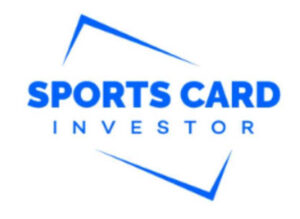
Passion and Profits: Collectable CEO Ezra Levine Talks Fractionalized Sports Cards
All things considered, the sale of one of the most high-profile and important modern sports cards at the end of 2020 was pretty ordinary. A 2009 National Treasures Stephen Curry RPA BGS 9.5 was packed up by Goldin Auctions and sent off to its new owner in a relatively uneventful exchange.
The price? A cool $451,200.
Where things get unordinary is about four months later. A similar card — another BGS 9.5 example with better sub-grades — was offered up by startup Collectable at a market cap of $497,000.
This time it went to 1,060 new owners.
An example of fractional ownership, shares of that six-figure Curry RPA were offered up on the Collectable marketplace for just $10 apiece. At that price almost anyone can play.
One of the newest and most popular trends in the hobby, fractionalized ownership has given collectors a new path to high-end items through marketplaces like Collectable, Rally Road, and Otis.
Sports Card Investor checked in with Collectable CEO Ezra Levine to talk cards, investing, what challenges fractionalized assets face and more.
Questions and answers were edited for length and clarity.
For readers who don’t know much about you, can you tell us a little about your background and career before Collectable?
I grew up in New York City and I was a huge sports fan, obviously. I was primarily a Yankees and Knicks die-hard fan. I went to the University of Michigan for my undergraduate degree, and when I graduated I was just looking for an opportunity, so I applied to law schools. I thought about going until I realized I had zero interest in actually practicing law, so I did what every senior does and I applied to a gazillion companies. The first one to offer me a position was Bloomberg LP where I started out in their financial markets training program. I went through that for about six months and graduated and was assigned to a New York City hedge fund sales team.
After about eight or nine years on Wall Street. the company that I was at actually gave up all the outside capitol — we became what’s called a family office where we just managed one family’s money and we just started doing some innovative and exciting things, both publicly and privately. We were investing in different types of businesses, primarily within sports, media, consumer and retail.
After about 10 years I realized I really enjoyed operating businesses, and I started poking around a bit and I heard from people that there was something happening in sports collectibles. It was exhibiting this resurgence and it was a potentially exciting industry that had a lot of legacy players in it. There was a lot of opportunity to democratize it, provide transparency to it, introduce new data to it. Just introduce a new way for people to experience and interact with the sports collectible space. So I joined Collectable back in January of last year and the rest is history.
What was Collectable like before you joined?
Collectable was a completely different concept before. Collectable has been around since 2014, and we were a sports auction data company. So we scraped all the data from the auction houses and you’d go onto the app and pull up the auction price results for an item. That was operable for about 4 years and it had a really good shelf-life to it.
But the founding team realized there was a much bigger opportunity to leverage the relationships that we had and the data that we were sitting on. So they pivoted the business to fractional ownership. I’d really like to shoutout Jason Epstein who is currently our Chairman. He was one of the original founders of Collectable and he was really the one who pivoted the business to fractional ownership.
What have been the biggest challenges when launching the new Collectable?
There’s challenges to every business, of course. And our job is to take what’s a very challenging business and make it appear easy. The biggest challenge for us, and any fractional ownership player, is the amount of regulatory components of the business that we have to abide by. We’re ultimately selling securities, so that’s something we have to be very mindful of.
That said, our view is that by going through the securitized route we’re providing a degree of consumer protection and investor protection that I think the industry sorely needed. This is an industry that has suffered for a long time from mistrust, bad actors, manipulation and trimming — you can go down the list that has created almost a toxic environment for the industry. But in spite of that, the industry was under-the-radar soaring. If you follow certain prices and releases it was succeeding in spite of the activities we thought our model could replace and improve upon.
What is the process for acquiring an item that will be offered on the platform?
So we don’t actually acquire anything. We consign almost all the items we put on the platform. Look at us as a high-end consignment service. Once we consign it we get it securitized or qualified by the SEC and we can take it public on our exchange. Once we take it public we pretty much take the value of the item and create very affordable share counts that any investor over the age of 18 can buy.
What’s the process for valuation?
It’s highly dependent on the item. For cards, or particularly liquid cards, it’s a pretty easy appraisal process. We look at comps. We look at Sports Card Investor, we look at CardLadder, and we have access to all the same tools everyone does. We have industry relationships that sort of give us the major trends in the category. Establishing valuations for all these items is one of the biggest challenges we have.
For a lot of the cards it’s very easy to come up with the valuation, but a lot of the memorabilia items haven’t been traded ever. We have had some items that haven’t seen the light of day before, so how do you come up with the valuations there? Some of that is more art than science, but we do the very best we can to be as fair to the investors and the consignors as we can. We aren’t always perfect, but we generally think we are one of the best in the business at determining what we think is fair and we price it accordingly.
How do you come up with the share price?
The share price is generally fixed at $10. We’ve experimented with various share prices and we’re still trying to figure out the sweet spot of pricing. Sort of where people don’t perceive it to be cheap — there’s this perception in the public market that if it’s below $10 it’s a penny stock and it’s devalued. So we don’t want to give off the impression that our items are cheap because they are some of the most iconic items of all time. But we also want to make them affordable and for new users of any income bracket to be able to come in and say “I’m going to give Collectable a try and it’s not going to cost me an arm and a leg to do so.” After testing various price points we’ve pretty much landed on $10, so generally you’ll see most items at $10 per share on IPO. Then it’s up to the secondary market and supply and demand to go from there.
How do you determine share caps?

Share caps is funny because it is actually one of the most asked about parts of our business. That’s one of the unique parts of our business. You want to give people enough exposure so they are excited about the investment, but you always want to get as many people involved as possible. So generally speaking, it’s very much a feel thing. We stagger it so it’s a much lower share cap for the first 15 minutes and then it gets higher for the next 45 minutes. And then after an hour we lift the cap and you can buy as much as you want. The real rush of demand is right when the IPO begins when we get hundreds if not thousands to buy in. On a higher-ticket item we might change it a little bit, but it’s usually $150-$250 for the first 15 minutes and then it scales up for the next 45 minutes until lifting the cap entirely.
How much do you view this as owning a collectible for fun vs. owning a legitimate alternative asset that you want to make money from?
The beauty of this category is that this is something that’s, in my opinion, the perfect intersection of passion and profits. Passion because this is a hobby for a lot of people and it’s the center of some of our greatest memories. But I think if people only think of it as a hobby and don’t consider the potential to make money, I think they are probably lying to themselves. This is an industry where there have been opportunities to make a profit for a century. And if you look at some of the datasets that are out there, it’s very clear that this is a legitimate alternative asset class and it has been for almost 100 years.
And we’ve seen performance as an asset class across numerous periods of economic growth and numerous periods of economic slowness. This has been something that, generally speaking, sort of outperformed traditional stocks and has been a great value and generally declined less than the broader stock market has when there are periods of economic strife. I think the argument that this isn’t an asset class is ignoring cold, hard data.
I think for the first time investors of all income brackets have the opportunity to participate and see for themselves what collectors have known for decades. It’s been a small industry that has been primarily reserved for people who could afford to participate. The best returns have been at the upper echelon of the industry, which has been out of reach for all but the wealthy few. This is a chance now for people to have their eyes open to opportunities that have always been there but weren’t always affordable.
What effect do you think fractionalized assets has had on new investors?
I think it’s real. I think this next generation of investors is a hell of a lot more sophisticated than any other generation. This generation I think has a much higher degree of financial literacy than previous generations and I think that will only get better. Our generation is just thinking about this a lot more and what our generation is realizing is that we don’t necessarily want to invest the same ways that previous generations did. We don’t necessarily care about owning that stuff. Of course we want to make money, we always want to grow our wealth, but we want to invest with our heart and soul and in things that we understand and are proud to possess. I think that’s really powerful for our industry.
I do also think that, at the upper end of the industry, you have all the characteristics of being a sound investment while also having the passion.
Collectable tends to get more buy-out offers than other fractional ownership marketplaces. Why do you think that is?
I think it speaks to category focus. The beauty of being category-focused is you establish really deep relationships at every stage of the industry. Everything from big auctioneers to collectors — we’re generally very well connected and networked in our category. If you love sports, we are the place to go. If you love other assets or want a diversified portfolio, I think Otis and Rally do a great job. I think it’s really a function of us being very focused on our vertical and going very deep in that category.
In terms of fractionalized ownership, why do you think cards are such a strong asset class?
In my opinion, I think sports cards are uniquely positioned as an asset class because people have been conditioned to view it as a transactable item. People have been trading or buying and selling cards on eBay and people are familiar with buying or selling on StockX. I think sneakers are similar. And they generally have good comparisons and you can see how things perform. There’s more data and more consumer conditioning that has taken place.
What is one of your biggest concerns about the fractionalized ownership space?
I would say it just takes time to establish an asset class. We are just seeing crypto being looked at as a legitimate asset class and that took a long time, and there were plenty of roadblocks along the way. I’m not concerned about it, but one obstacle that collectibles in general have is we’ve never had real public-facing selling. It’s the continuation of the narrative and making people aware that this is a marketplace.
I think you’ll come to see collectibles are just another legitimate marketplace and asset that people can buy and sell that fluctuate just like any other asset. The ongoing challenge is the continued education to properly shape the narrative to make users aware that there will be good times and bad times, but historically speaking, this has been an incredible place to invest.
Why should people choose Collectable over other fractionalized ownership marketplaces?
I think if people want sports collectibles, we’ve proven we will have the best supply. I just think we have proven we work hard, we work fast, we think about the space differently, and are laser-focused on our vertical at the moment.
That said, I do actively root for all of the other players in the space because I know them and I think that they have done something pretty incredible. All of us are sort of first-movers in this category and it’s not easy to do what we are doing. But we are doing it because we all believe in this and we’re all doing this with the best intentions to provide opportunities for people that otherwise might not have them. I think that love and pure joy of what we are doing comes across in all of our efforts, and over time it will prove to be the right space at the right time.
Track your collection and maximize your profit with Market Movers, the hobby’s most powerful sports card pricing platform! Learn more here.






